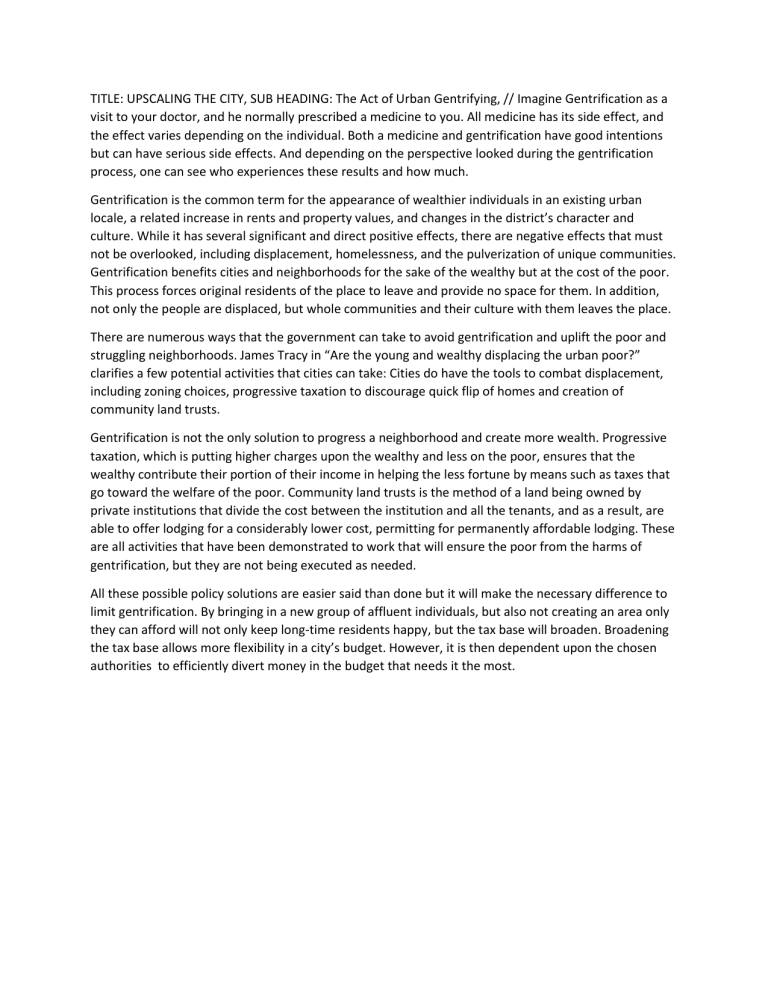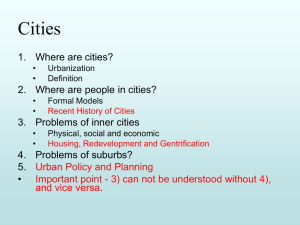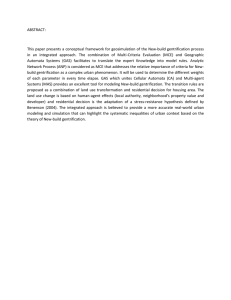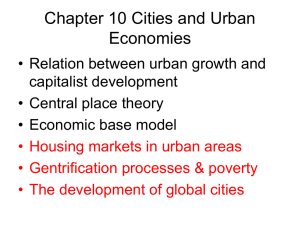
TITLE: UPSCALING THE CITY, SUB HEADING: The Act of Urban Gentrifying, // Imagine Gentrification as a visit to your doctor, and he normally prescribed a medicine to you. All medicine has its side effect, and the effect varies depending on the individual. Both a medicine and gentrification have good intentions but can have serious side effects. And depending on the perspective looked during the gentrification process, one can see who experiences these results and how much. Gentrification is the common term for the appearance of wealthier individuals in an existing urban locale, a related increase in rents and property values, and changes in the district’s character and culture. While it has several significant and direct positive effects, there are negative effects that must not be overlooked, including displacement, homelessness, and the pulverization of unique communities. Gentrification benefits cities and neighborhoods for the sake of the wealthy but at the cost of the poor. This process forces original residents of the place to leave and provide no space for them. In addition, not only the people are displaced, but whole communities and their culture with them leaves the place. There are numerous ways that the government can take to avoid gentrification and uplift the poor and struggling neighborhoods. James Tracy in “Are the young and wealthy displacing the urban poor?” clarifies a few potential activities that cities can take: Cities do have the tools to combat displacement, including zoning choices, progressive taxation to discourage quick flip of homes and creation of community land trusts. Gentrification is not the only solution to progress a neighborhood and create more wealth. Progressive taxation, which is putting higher charges upon the wealthy and less on the poor, ensures that the wealthy contribute their portion of their income in helping the less fortune by means such as taxes that go toward the welfare of the poor. Community land trusts is the method of a land being owned by private institutions that divide the cost between the institution and all the tenants, and as a result, are able to offer lodging for a considerably lower cost, permitting for permanently affordable lodging. These are all activities that have been demonstrated to work that will ensure the poor from the harms of gentrification, but they are not being executed as needed. All these possible policy solutions are easier said than done but it will make the necessary difference to limit gentrification. By bringing in a new group of affluent individuals, but also not creating an area only they can afford will not only keep long-time residents happy, but the tax base will broaden. Broadening the tax base allows more flexibility in a city’s budget. However, it is then dependent upon the chosen authorities to efficiently divert money in the budget that needs it the most.





